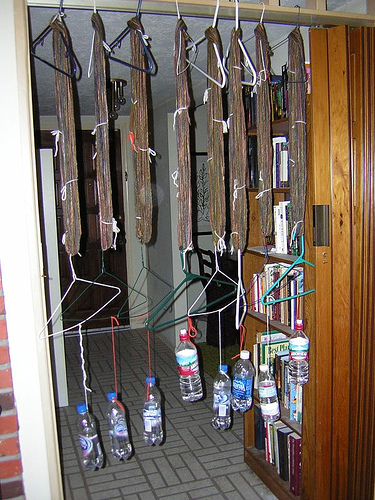How to finish your newly spun yarn

After you finish spinning (and probably plying) your yarn, you are faced with the challenge of "finishing." This is the name given to the final process, where - at a bare minimum - you wash and dry your new yarn. There are a lot of reasons to go through a finishing process.
First and most obviously, the yarn may have machine oil, residual lanolin, dirt from your hands and other grubbiness that it picked up along the process of coming off a sheep and into your living room. A good finishing wash will help clean up your skeins to make them as lovely and knittable as possible.
Second, finishing can help buffer any changes that may happen to the yarn after you knit it. If your yarn swells up or softens or flattens when it's washed, it's best to get some of that action out of the way up front. There may still be a change when you block the finished piece, but it won't be as dramatic (and potentially heartbreaking).
And finally, finishing can help set and distribute the twist in the yarn. This is the most contentious issue, and it's the source of most of the consternation a new spinner (like myself) faces when deciding how to finish.
Some people really abuse their skeins, under the theory that the more abuse you heap on it now, the better it will hold up in the future. This camp finishes its yarn by washing in super-hot (near boiling) water, and hangs it up to dry with soup cans suspended from the bottom to stretch it out.
Then you have the gentler, more natural camp. These folks wash their yarn gently in tepid water, wring it out and hang it up to dry without hitting or yanking on it. Their theory is that "yarn will be yarn," and abusing it is unnecessary, and risks damaging the skein.
Personally I have picked the middle road. I wash the yarn gently, but I give it a few good whip cracks when it's done, to help stretch out the twist. Then I hang it unweighted to dry. But each spinner is different!
Image courtesy Flickr/Noelle Noodle

0 comments